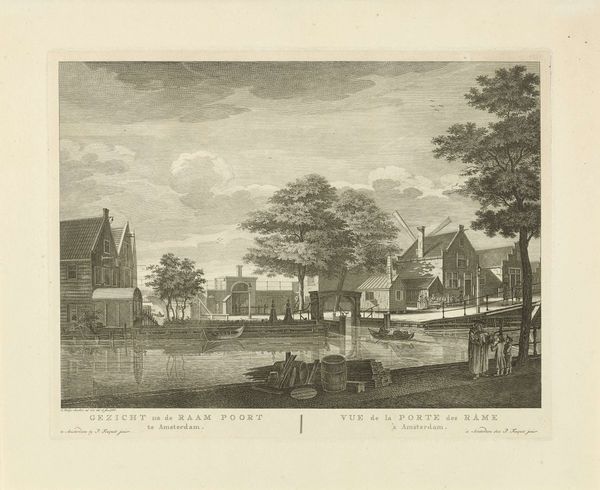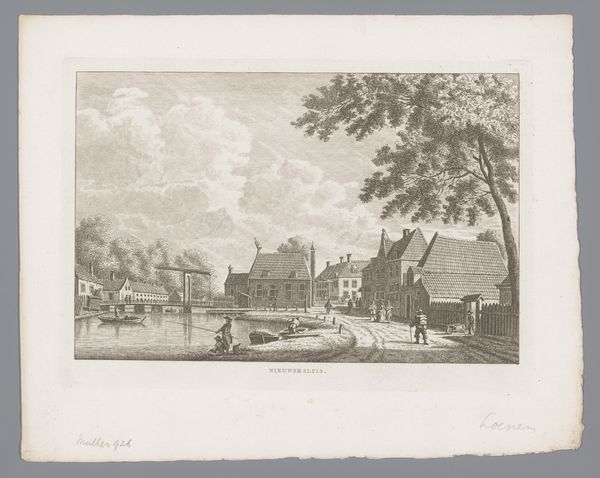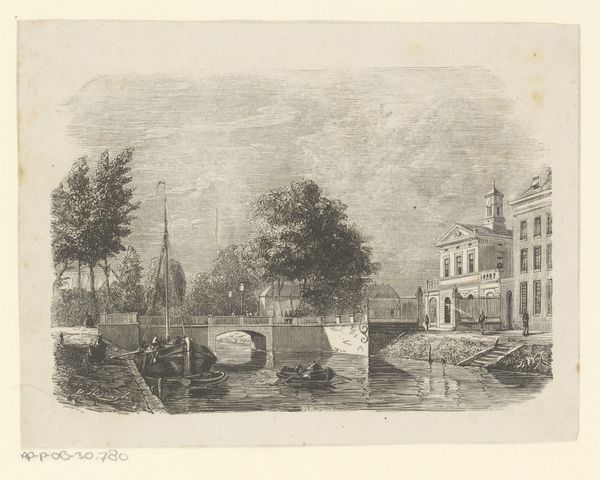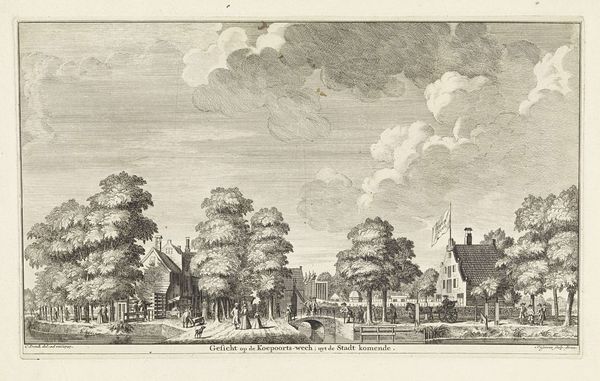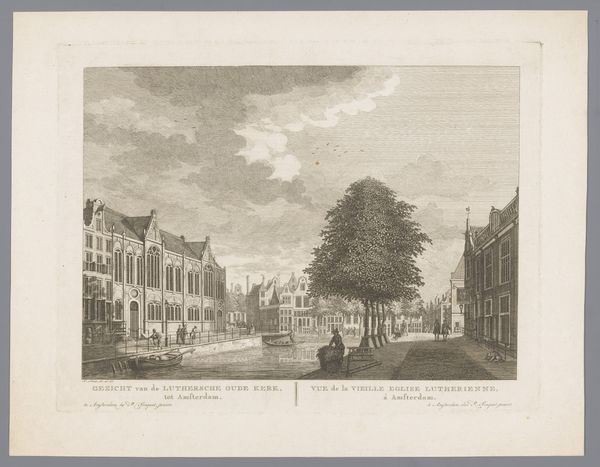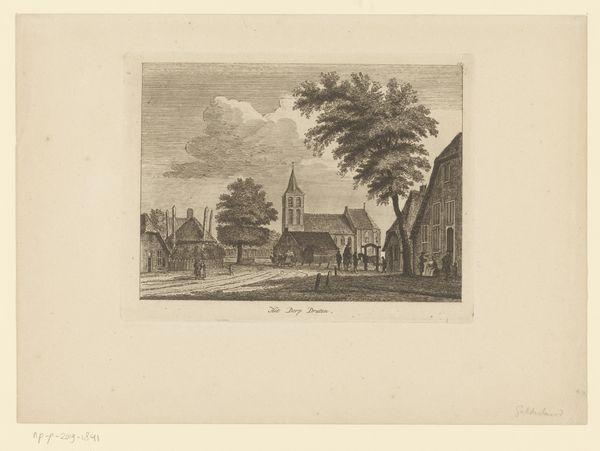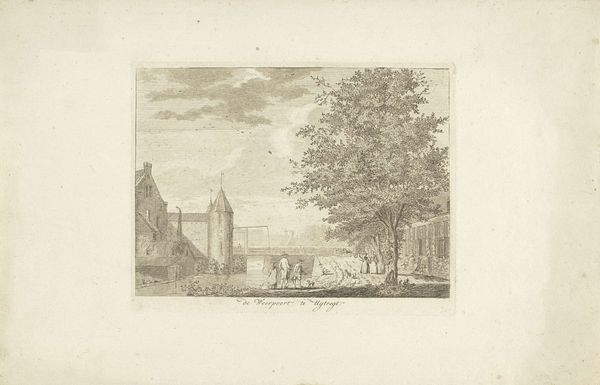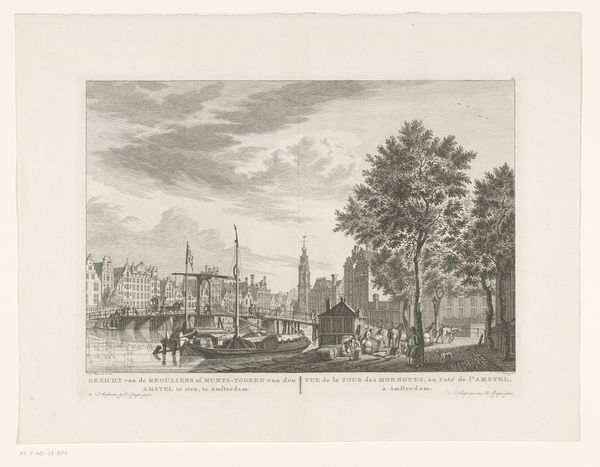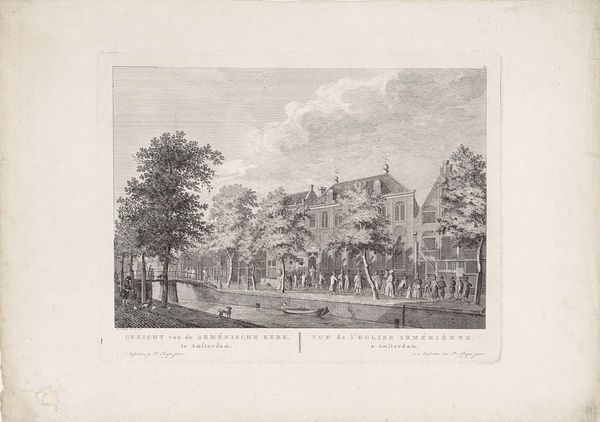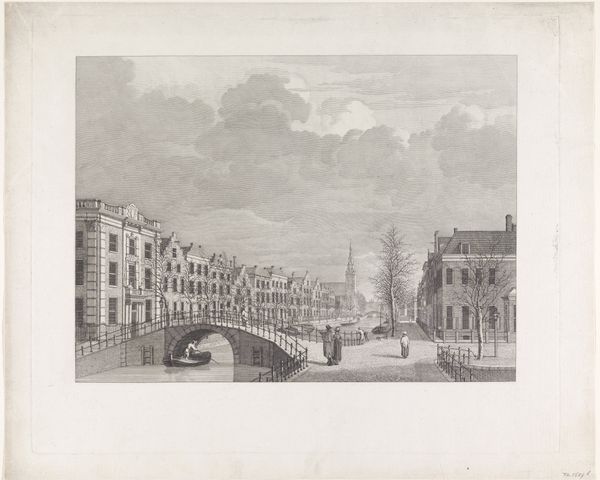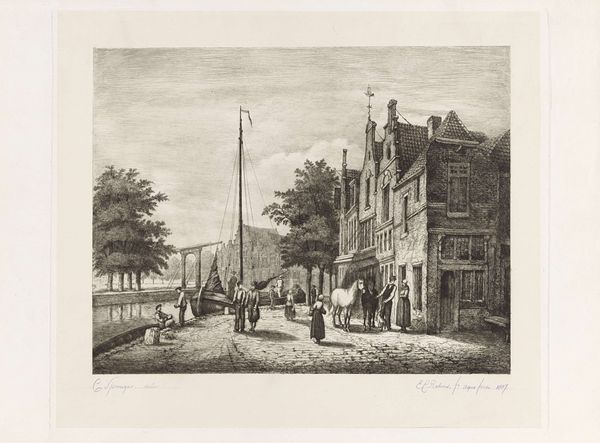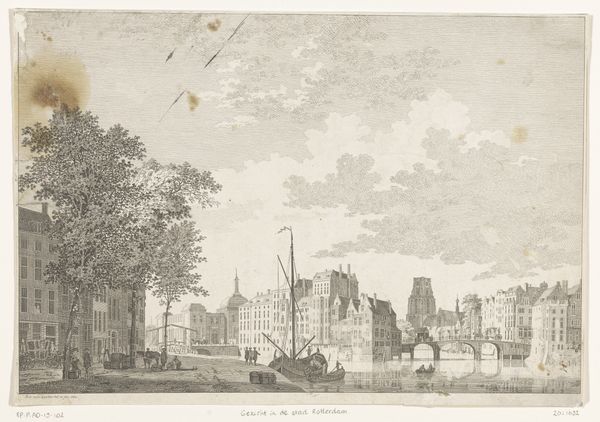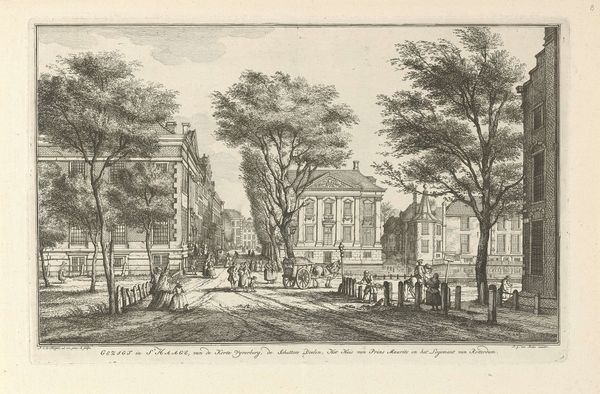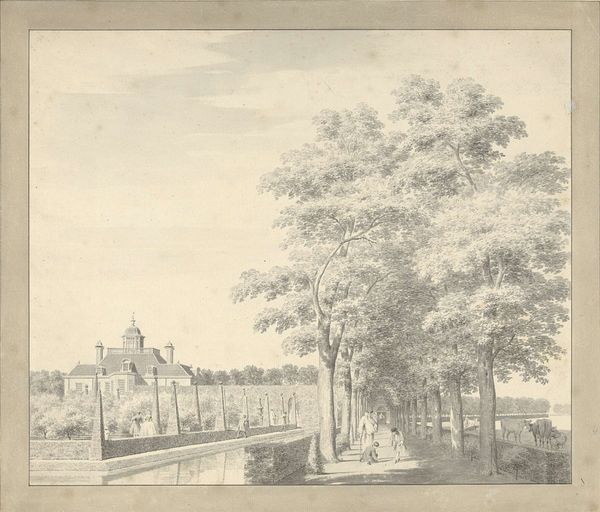
Gezicht op de Nieuwe Waalse Kerk (1685-1808) te Amsterdam c. 1770 - 1805
0:00
0:00
print, engraving
#
dutch-golden-age
# print
#
landscape
#
line
#
cityscape
#
engraving
Dimensions: height 269 mm, width 359 mm
Copyright: Rijks Museum: Open Domain
Curator: Welcome, everyone. Before us is "Gezicht op de Nieuwe Waalse Kerk (1685-1808) te Amsterdam," or "View of the New Walloon Church in Amsterdam." This print, by Hermanus Petrus Schouten, likely created between 1770 and 1805, offers a detailed cityscape rendered in the delicate art of engraving. Editor: Oh, wow, that's pretty. It gives me this calm, almost nostalgic feeling. All those tiny lines make it look like a hazy memory, you know? Like I’m looking at Amsterdam through a rainy window. Curator: Indeed. The work offers insight into the social and religious landscapes of 18th-century Amsterdam. The Walloon Church, of course, was significant to the city's French-speaking Protestant community, who sought refuge in Amsterdam. Its presence speaks to Amsterdam's role as a haven. Consider how the buildings flank the church... Editor: But the funny thing is, the church itself almost fades into the background. My eye is drawn more to the daily life happening around it, those figures milling about. It’s like the artist is saying the everyday is just as sacred. Or maybe, I don't know, maybe that's too much projection! Curator: Not at all. The interplay between the mundane and the monumental is a key feature. The presence of canals tells the story about Amsterdam's economic and social history, too. And it is important to acknowledge that prints were relatively accessible… How did this availability of images shape broader audiences understanding their relationship to power and the place they inhabit? Editor: Yeah, there's something super democratic about a print, right? Making art accessible. It’s like sharing a collective memory, this version of Amsterdam that anyone could hang in their home. Makes you think about who gets to tell the stories, doesn’t it? Curator: Precisely. Schouten’s print contributes to a visual archive, influencing perspectives on Amsterdam and Dutch identity itself. Editor: Well, now I’m seeing this quiet revolution happening in ink and paper. Thanks for opening my eyes to that! Curator: It's been my pleasure. Let's carry these perspectives with us, as we continue to examine how art shapes our world.
Comments
No comments
Be the first to comment and join the conversation on the ultimate creative platform.
